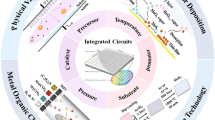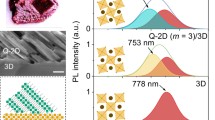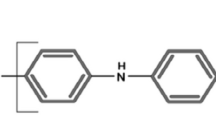Abstract
Two-dimensional (2D) materials have attracted significant attention as a promising candidate for electronic and optoelectronic devices. However, low absorption impairs the performance of few-layer 2D material-based photodetectors (PDs). Herein, we purpose an asymmetric Fabry-Perot cavity consisting of a dielectric layer and metallic film to enhance the interactions between light and monolayer molybdenum disulfide (MoS2). The external quantum efficiency of the monolayer MoS2 heterojunction PD is enhanced by more than two orders of magnitude via optimizing the thickness of the dielectric layer. The monolayer-MoS2/nickel oxide heterojunction PD exhibits a large on/off ratio of 2 × 105, a responsivity of 703 A W−1, and an ultrahigh detectivity of 1.31 × 1015 Jones. The detectivity is the best value ever reported for monolayer-MoS2 heterojunction PDs. Our results may pave the way for high-performance 2D material-based PDs.

摘要
二维材料在柔性光电器件方面具有广泛的应用前景, 引起了研究人员的极大兴趣. 然而, 对于原子层厚度的二维材料来说, 低吸收效率限制了其光电探测性能的改善. 对此, 我们提出了一种利用非对称Fabry-Perot腔增强二维材料吸收效率的方法, 该结构由金属和介质层构成. 通过优化介质层厚度, 可以调控发生多光束干涉相消的波长, 使其与二维材料吸收相匹配, 从而改善二维材料的吸收效率, 并将单层二硫化钼探测器的外量子效率提高了两个数量级. 此外, 该探测器具有1.31 × 1015 Jones的超高探测率, 为已报道的单层二硫化钼异质结探测器中的最高值. 本工作为制备高性能二维材料探测器提供了一条有效 途径.
Similar content being viewed by others
References
Wang H, Yu T, Zhao J, et al. Low-power memristors based on layered 2D SnSe/graphene materials. Sci China Mater, 2021, 64: 1989–1996
Wang S, Xu J, Wang W, et al. Skin electronics from scalable fabrication of an intrinsically stretchable transistor array. Nature, 2018, 555: 83–88
Bie YQ, Grosso G, Heuck M, et al. A MoTe2-based light-emitting diode and photodetector for silicon photonic integrated circuits. Nat Nanotech, 2017, 12: 1124–1129
Liu G, Su J, Feng X, et al. Synthesis of 2D ternary layered manganese phosphorous trichalcogenides towards ultraviolet photodetection. Sci China Mater, 2021, 64: 2251–2260
Zhu J, Chen X, Shang W, et al. Van der Waals contact between 2D magnetic VSe2 and transition metals and demonstration of high-performance spin-field-effect transistors. Sci China Mater, 2021, 64: 2786–2794
Novoselov KS, Mishchenko A, Carvalho A, et al. 2D materials and van der Waals heterostructures. Science, 2016, 353: 9439
Liu Y, Weiss NO, Duan X, et al. Van der Waals heterostructures and devices. Nat Rev Mater, 2016, 1: 16042
Kang K, Lee KH, Han Y, et al. Layer-by-layer assembly of two-dimensional materials into wafer-scale heterostructures. Nature, 2017, 550: 229–233
Wang P, Jia C, Huang Y, et al. Van der Waals heterostructures by design: From 1D and 2D to 3D. Matter, 2021, 4: 552–581
Wu F, Li Q, Wang P, et al. High efficiency and fast van der Waals hetero-photodiodes with a unilateral depletion region. Nat Commun, 2019, 10: 4663
Zhang P, Bian C, Ye J, et al. Epitaxial growth of metal-semiconductor van der Waals heterostructures NbS2/MoS2 with enhanced performance of transistors and photodetectors. Sci China Mater, 2020, 63: 1548–1559
Qiao H, Huang Z, Ren X, et al. Self-powered photodetectors based on 2D materials. Adv Opt Mater, 2020, 8: 1900765
Fu B, Sun J, Cheng Y, et al. Recent progress on metal-based nanomaterials: Fabrications, optical properties, and applications in ultrafast photonics. Adv Funct Mater, 2021, 31: 2107363
Li N, Wang Q, Shen C, et al. Large-scale flexible and transparent electronics based on monolayer molybdenum disulfide field-effect transistors. Nat Electron, 2020, 3: 711–717
Daus A, Vaziri S, Chen V, et al. High-performance flexible nanoscale transistors based on transition metal dichalcogenides. Nat Electron, 2021, 4: 495–501
Yang P, Yang H, Wu Z, et al. Large-area monolayer MoS2 nanosheets on GaN substrates for light-emitting diodes and valley-spin electronic devices. ACS Appl Nano Mater, 2021, 4: 12127–12136
Jia C, Wu D, Wu E, et al. A self-powered high-performance photodetector based on a MoS2/GaAs heterojunction with high polarization sensitivity. J Mater Chem C, 2019, 7: 3817–3821
Zhang Y, Huang P, Guo J, et al. Graphdiyne-based flexible photodetectors with high responsivity and detectivity. Adv Mater, 2020, 32: 2001082
Gao L, Ma C, Wei S, et al. Applications of few-layer Nb2C MXene: Narrow-band photodetectors and femtosecond mode-locked fiber lasers. ACS Nano, 2021, 15: 954–965
Pei J, Yang J, Yildirim T, et al. Many-body complexes in 2D semiconductors. Adv Mater, 2019, 31: 1706945
Chen Y, Lu Y, Liao M, et al. 3D solar-blind Ga2O3 photodetector array realized via origami method. Adv Funct Mater, 2019, 29: 1906040
Chen XX, Xiao XH, Shi ZF, et al. Self-powered ultraviolet photodetection realized by GaN/Si nanoheterostructure based on silicon nanoporous pillar array. J Alloys Compd, 2018, 767: 368–373
Chen YC, Lu YJ, Lin CN, et al. Self-powered diamond/β-Ga2O3 photodetectors for solar-blind imaging. J Mater Chem C, 2018, 6: 5727–5732
Yang B, Zhang F, Chen J, et al. Ultrasensitive and fast all-inorganic perovskite-based photodetector via fast carrier diffusion. Adv Mater, 2017, 29: 1703758
Tsai DS, Liu KK, Lien DH, et al. Few-layer MoS2 with high broadband photogain and fast optical switching for use in harsh environments. ACS Nano, 2013, 7: 3905–3911
Yang Q, Zhang C, Wu S, et al. Photonic surface waves enabled perfect infrared absorption by monolayer graphene. Nano Energy, 2018, 48: 161–169
Anguita JV, Ahmad M, Haq S, et al. Ultra-broadband light trapping using nanotextured decoupled graphene multilayers. Sci Adv, 2016, 2: e1501238
Guo CC, Zhu ZH, Yuan XD, et al. Experimental demonstration of total absorption over 99% in the near infrared for monolayer-graphene-based subwavelength structures. Adv Opt Mater, 2016, 4: 1955–1960
Dai Y, Wang Y, Das S, et al. Broadband plasmon-enhanced four-wave mixing in monolayer MoS2. Nano Lett, 2021, 21: 6321–6327
Fang H, Hu W. Photogating in low dimensional photodetectors. Adv Sci, 2017, 4: 1700323
Wang J, Han J, Chen X, et al. Design strategies for two-dimensional material photodetectors to enhance device performance. InfoMat, 2019, 1: 33–53
Miao J, Hu W, Jing Y, et al. Surface plasmon-enhanced photodetection in few layer MoS2 phototransistors with Au nanostructure arrays. Small, 2015, 11: 2392–2398
Yamamoto M, Ueno K, Tsukagoshi K. Pronounced photogating effect in atomically thin WSe2 with a self-limiting surface oxide layer. Appl Phys Lett, 2018, 112: 181902
Yang Y, Li J, Choi S, et al. High-responsivity PtSe2 photodetector enhanced by photogating effect. Appl Phys Lett, 2021, 118: 013103
Liu JT, Wang TB, Li XJ, et al. Enhanced absorption of monolayer MoS2 with resonant back reflector. J Appl Phys, 2014, 115: 193511
Jeong HY, Kim UJ, Kim H, et al. Optical gain in MoS2via coupling with nanostructured substrate: Fabry-Perot interference and plasmonic excitation. ACS Nano, 2016, 10: 8192–8198
Lee S, Park Y, Yoo G, et al. Wavelength-selective enhancement of photo-responsivity in metal-gated multi-layer MoS2 phototransistors. Appl Phys Lett, 2017, 111: 223106
Yan W, Shresha VR, Jeangros Q, et al. Spectrally selective mid-wave infrared detection using Fabry-Pérot cavity enhanced black phosphorus 2D photodiodes. ACS Nano, 2020, 14: 13645–13651
Wang Z, Wang X, Cong S, et al. Towards full-colour tunability of inorganic electrochromic devices using ultracompact Fabry-Perot nanocavities. Nat Commun, 2020, 11: 302
Wang Q, Guo J, Ding Z, et al. Fabry-Perot cavity-enhanced optical absorption in ultrasensitive tunable photodiodes based on hybrid 2D materials. Nano Lett, 2017, 17: 7593–7598
Huang X, Feng X, Chen L, et al. Fabry-Perot cavity enhanced lightmatter interactions in two-dimensional van der Waals heterostructure. Nano Energy, 2019, 62: 667–673
Yang Z, Zhou Y, Chen Y, et al. Reflective color filters and monolithic color printing based on asymmetric Fabry-Perot cavities using nickel as a broadband absorber. Adv Opt Mater, 2016, 4: 1196–1202
Yoo G, Choi SL, Park SJ, et al. Flexible and wavelength-selective MoS2 phototransistors with monolithically integrated transmission color filters. Sci Rep, 2017, 7: 40945
Tian Y, Guo Z, Liu Z, et al. Efficiently enhanced the visible-light absorption of monolayer WS2 by constructing an asymmetric Fabry-Perot cavity. Mater Today Nano, 2021, 14: 100112
Johnson PB, Christy RW. Optical constants of the noble metals. Phys Rev B, 1972, 6: 4370–4379
Usha KS, Sivakumar R, Sanjeeviraja C. Optical constants and dispersion energy parameters of NiO thin films prepared by radio frequency magnetron sputtering technique. J Appl Phys, 2013, 114: 123501
Kats MA, Blanchard R, Genevet P, et al. Nanometre optical coatings based on strong interference effects in highly absorbing media. Nat Mater, 2013, 12: 20–24
Zheng Z, Chen P, Lu J, et al. Self-assembly In2Se3/SnSe2 heterostructure array with suppressed dark current and enhanced photosensitivity for weak signal. Sci China Mater, 2020, 63: 1560–1569
Gong X, Tong M, Xia Y, et al. High-detectivity polymer photodetectors with spectral response from 300 nm to 1450 nm. Science, 2009, 325: 1665–1667
Kong WY, Wu GA, Wang KY, et al. Graphene-β-Ga2O3 heterojunction for highly sensitive deep UV photodetector application. Adv Mater, 2016, 28: 10725–10731
Singh SD, Das A, Ajimsha RS, et al. Studies on structural and optical properties of pulsed laser deposited NiO thin films under varying deposition parameters. Mater Sci Semicond Proc, 2017, 66: 186–190
Klots AR, Newaz AKM, Wang B, et al. Probing excitonic states in suspended two-dimensional semiconductors by photocurrent spectroscopy. Sci Rep, 2015, 4: 6608
Dhakal KP, Duong DL, Lee J, et al. Confocal absorption spectral imaging of MoS2: Optical transitions depending on the atomic thickness of intrinsic and chemically doped MoS2. Nanoscale, 2014, 6: 13028–13035
Zhang Y, Yu Y, Mi L, et al. In situ fabrication of vertical multilayered MoS2/Si homotype heterojunction for high-speed visible-near-infrared photodetectors. Small, 2016, 12: 1062–1071
Lopez-Sanchez O, Lembke D, Kayci M, et al. Ultrasensitive photodetectors based on monolayer MoS2. Nat Nanotech, 2013, 8: 497–501
Kang DH, Kim MS, Shim J, et al. High-performance transition metal dichalcogenide photodetectors enhanced by self-assembled monolayer doping. Adv Funct Mater, 2015, 25: 4219–4227
Kim KS, Ji YJ, Kim KH, et al. Ultrasensitive MoS2 photodetector by serial nano-bridge multi-heterojunction. Nat Commun, 2019, 10: 4701
Wang H, Li Z, Li D, et al. Junction field-effect transistors based on PdSe2/MoS2 heterostructures for photodetectors showing high responsivity and detectivity. Adv Funct Mater, 2021, 31: 2106105
Zhang X, Li J, Ma Z, et al. Design and integration of a layered MoS2/GaN van der Waals Heterostructure for wide spectral detection and enhanced photoresponse. ACS Appl Mater Interfaces, 2020, 12: 47721–47728
Liu X, Li F, Xu M, et al. High response, self-powered photodetector based on the monolayer MoS2/p-Si heterojunction with asymmetric electrodes. Langmuir, 2018, 34: 14151–14157
Shu K, Gao W, Wan F, et al. High-performance broadband photodetectors based on n-MoS2/p-Ge0.9Sn0.1 heterojunctions. ACS Appl Electron Mater, 2021, 3: 3218–3225
Li F, Xu B, Yang W, et al. High-performance optoelectronic devices based on van der Waals vertical MoS2/MoSe2 heterostructures. Nano Res, 2020, 13: 1053–1059
Bai F, Qi J, Li F, et al. A high-performance self-powered photodetector based on monolayer MoS2/perovskite heterostructures. Adv Mater Interfaces, 2018, 5: 1701275
Zhao B, Gan Z, Johnson M, et al. 2D van der Waals heterojunction of organic and inorganic monolayers for high responsivity phototransistors. Adv Funct Mater, 2021, 31: 2105444
Li F, Tao R, Cao B, et al. Manipulating the light-matter interaction of PtS/MoS2 p-n junctions for high performance broadband photodetection. Adv Funct Mater, 2021, 31: 2104367
Wu F, Xia H, Sun H, et al. AsP/InSe van der Waals tunneling heterojunctions with ultrahigh reverse rectification ratio and high photosensitivity. Adv Funct Mater, 2019, 29: 1900314
Zeng LH, Wu D, Lin SH, et al. Controlled synthesis of 2D palladium diselenide for sensitive photodetector applications. Adv Funct Mater, 2019, 29: 1806878
Acknowledgements
This work was supported by the National Natural Science Foundation of China (11674290, U1704138, 61804136, U1804155 and 11974317), Henan Science Fund for Distinguished Young Scholars (212300410020), the Key Project of Henan Higher Education (21A140001), Zhengzhou University Physics Discipline Improvement Program and China Postdoctoral Science Foundation (2018M630829 and 2019T120630).
Author information
Authors and Affiliations
Contributions
Author contributions Yang X, Dong L, and Shan CX proposed and guided the project. Chen X designed and conducted the experiments. Zhang Y and Zang J performed the theoretical calculation and SEM measurement, respectively. Chen Y and Zhao Y performed the response spectra measurement. Chen X wrote the paper. All the authors participated in discussions and approved the manuscript.
Corresponding authors
Ethics declarations
Conflict of interest The authors declare that they have no conflict of interest.
Additional information
Xuexia Chen received her BSc and MSc degrees in physics from Zhengzhou University in 2015 and 2017, respectively. She is studying for her PhD degree at Zhengzhu University under the supervision of Prof. Lin Dong. Her study focuses on the controllable synthesis of 2D materials, and their applications in optoelectronics.
Xun Yang received his BSc degree in physics from the University of Science and Technology of China (USTC) in 2012, and PhD degree in condensed matter physics from Changchun Institute of Optics, Fine Mechanics and Physics, Chinese Academy of Sciences (CAS) under the supervision of Prof. Chongxin Shan in 2017. Afterwards he joined Zhengzhou University in 2017. He is currently an associate professor at the School of Physics & Microelectronics, Zhengzhou University. His research interest focuses on wide-bandgap semiconductors.
Lin Dong received his BSc (1998) and MSc (2001) degrees in chemistry from Jilin University, and PhD degree (2005) in condensed matter physics from Changchun Institute of Optics, Fine Mechanics and Physics, CAS. He joined Zhengzhou University in 2005. He is currently a professor at the School of Physics & Microelectronics, Zhengzhou University. His research interest mainly focuses on mechanoluminescence and piezotronic/piezophototronic derived nanomaterials and devices.
Chong-Xin Shan is a professor of Zhengzhou University. He received his BSc degree from Wuhan University in 1999, and PhD degree from Changchun Institute of Optics, Fine Mechanics and Physics, CAS in 2004. His current research focuses on semiconductor optoelectronic materials and devices. He is supported by the National Natural Science Fund for the Distinguished Young Scholars, Distinguished professor of Changjiang Scholars, etc.
Supplementary information Supporting data are available in the online version of the paper.
Rights and permissions
About this article
Cite this article
Chen, X., Zang, J., Yang, X. et al. Ultrasensitive monolayer-MoS2 heterojunction photodetectors realized via an asymmetric Fabry-Perot cavity. Sci. China Mater. 65, 1861–1868 (2022). https://doi.org/10.1007/s40843-021-1955-0
Received:
Accepted:
Published:
Issue Date:
DOI: https://doi.org/10.1007/s40843-021-1955-0




